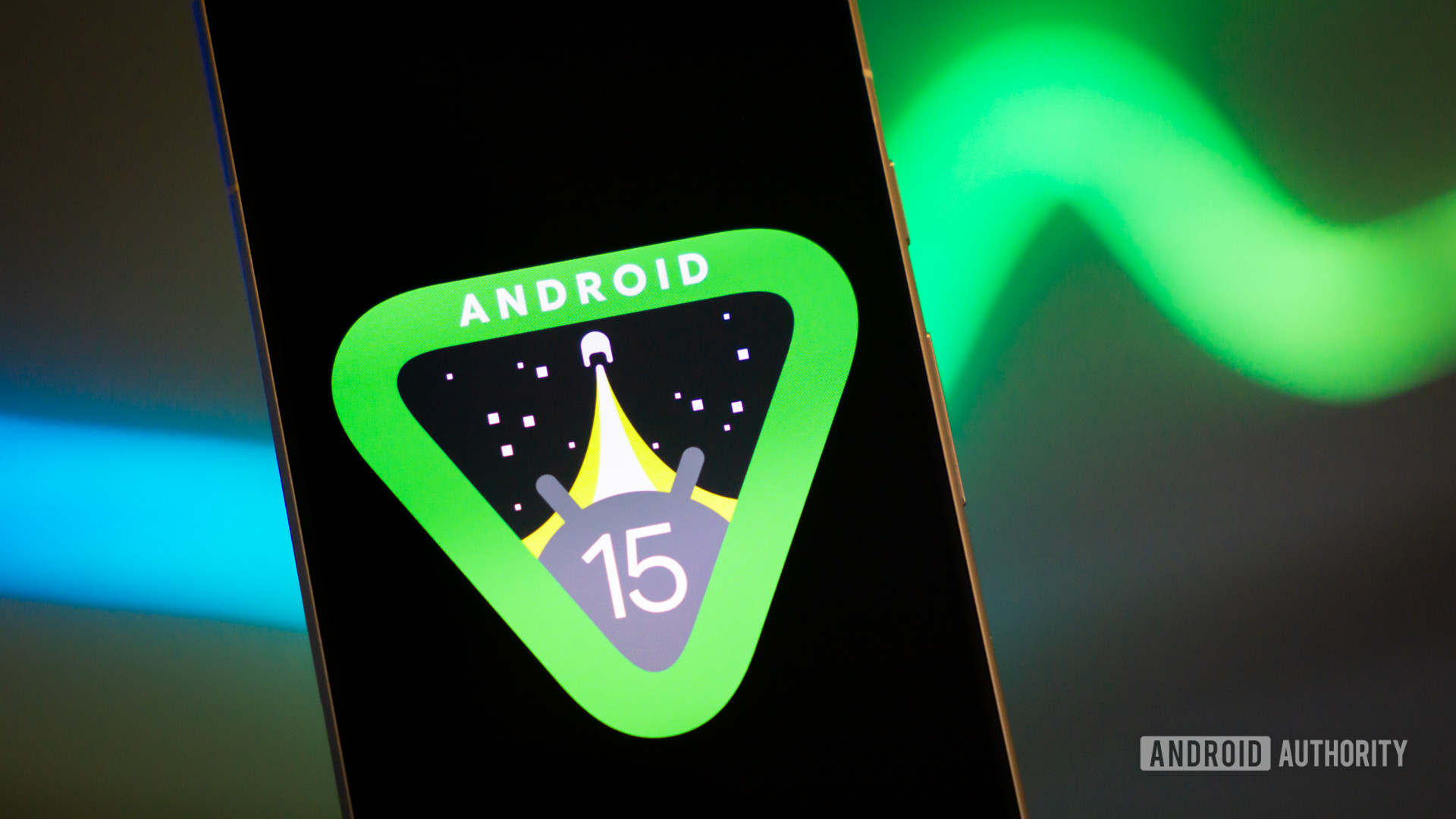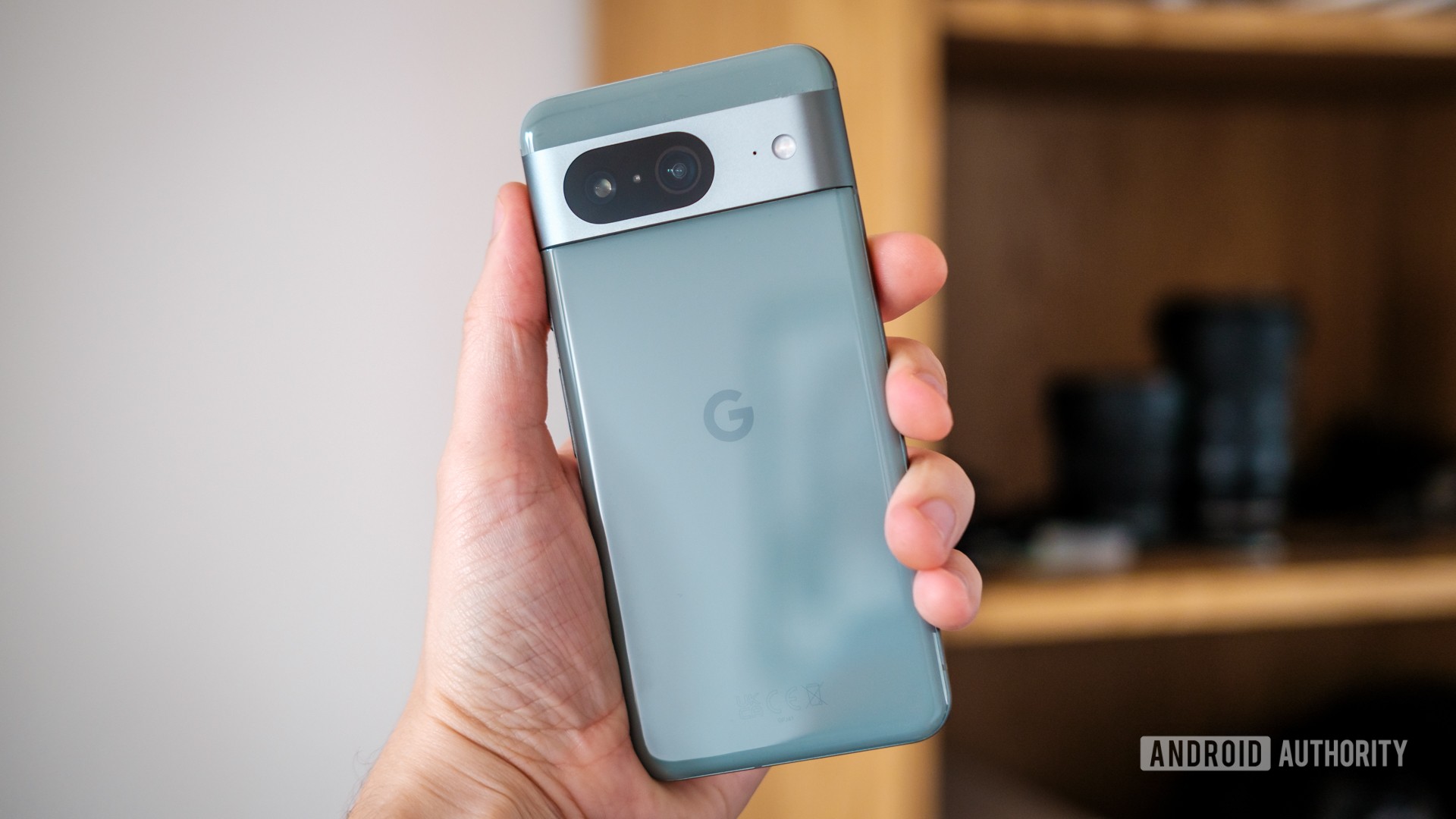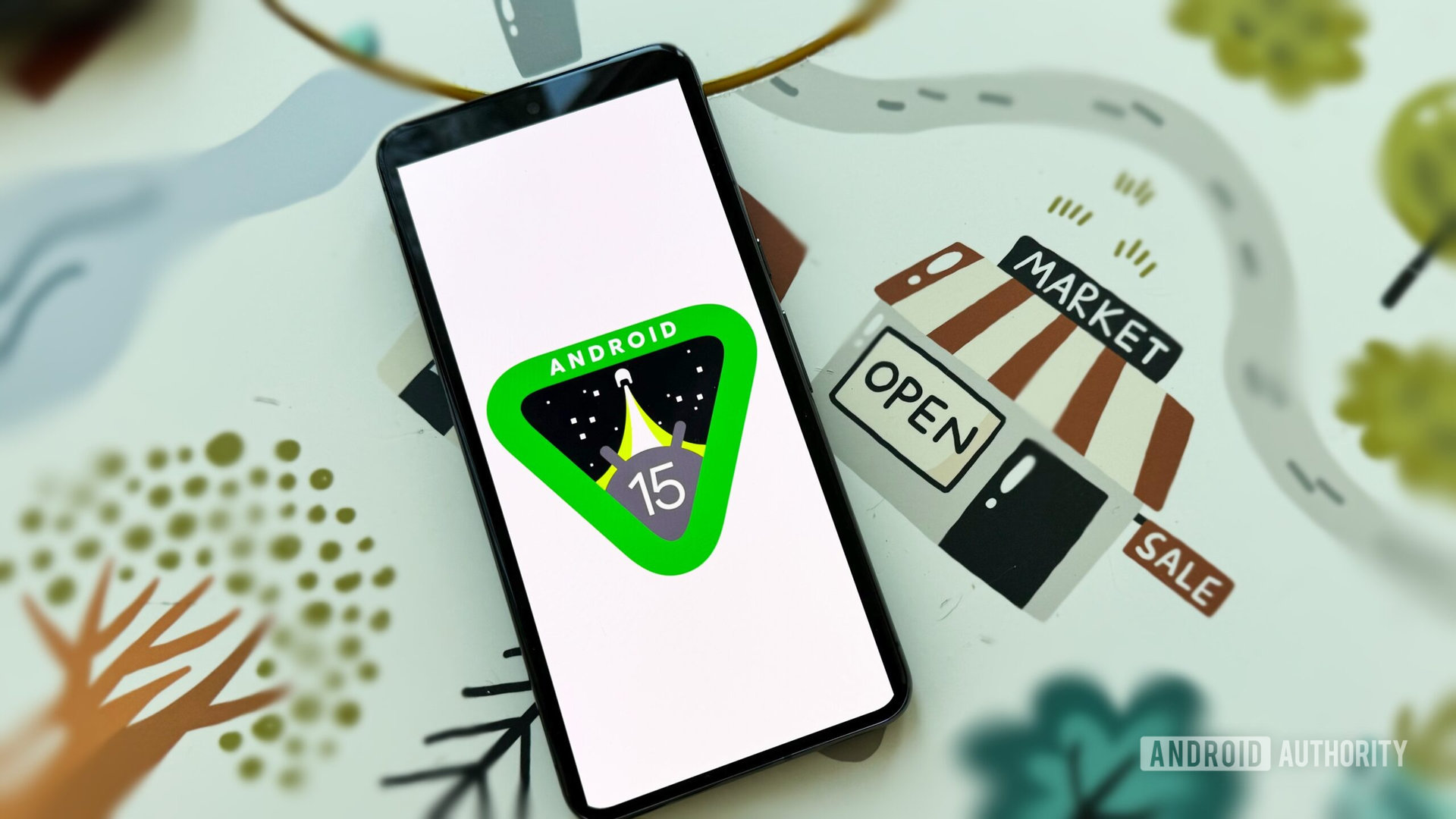How To Install Android 15 On Your Pixel Phone Right Now
Android 15 is finally here, so we hope you're ready for the next version of Android! While it will take time for the software to be stable enough for daily use, that doesn't mean you can't try it. Below we have a guide on how to install the first developer preview of Android 15 on supported Pixel devices.
Warning: Currently Android 15 DP1 is unstable software and should not be used on your original phone . There will be many bugs and other problems, and some features you rely on may not work properly or at all. For security reasons, we recommend that you only install it on a second phone at this time. Proceed at your own risk.
Should I install Android 15?

Edgar Cervantes / Android Authority
Currently, the Android 15 version we have is very early. Developer Preview, as the name suggests, is meant to allow developers to test their apps. It is not intended for casual users. Being in the early stages of the development cycle basically guarantees that some features will never work and that there will be major bugs.
With all that in mind, there are two types of people who should install an earlier version of Android 15: developers and Android enthusiasts who can get a second Pixel phone or tablet. We strongly recommend that you do not install the developer preview or early beta on your flagship Pixel device. Inconvenient or uncomfortable.
But, we're not here to stop your love for Android. Google Tools is open to anyone and you can install Android 15 on any device of your choice as long as you are willing to accept the consequences!
Which devices can install Android 15 today?

Robert Triggs / Android Authority
Google is offering developer previews and betas for Pixel devices that will eventually be released in stable form. Unfortunately, this means that many older Pixel phones are not compatible, including the Google Pixel 5 and all previous models. Here's the full list of Pixel products that can install Android 15.
- Google Pixel 8 Pro
- Google Pixel 8
- Google Pixel Fold
- Google Pixel tablets
- Google Pixel 7a
- Google Pixel 7 Pro
- Google Pixel 7
- Google Pixel 6a
- Google Pixel 6 Pro
- Google Pixel 6
If you don't see your Pixel device in the list, you're stuck on Android 14 (or earlier) indefinitely. Keep in mind that we're expecting the new Pixels before the stable Android 15 launch. These devices, including the rumored Google Pixel 8a, could also receive Android 15 after launch. We will update the details when the device becomes official.
How to install Android 15 DP1?

Adama Sharma/Android Authority
There are three ways to install Android 15. The first is the supported method, which we recommend for almost everyone. It uses the Chrome browser to automate most of the steps and is especially useful if you're upgrading to Android 15 from a previous version.
There is also an unexpected method that uses ADB and Fastboot. This is more complicated, but gives you more freedom. If you are already using Android 15, these methods are useful because you can install the new Android 15 without rooting your phone first.
And remember that in any case , you need to completely wipe your phone data to switch from Android 14 to Android 15 . If you don't want to do this, you don't have to install Android 15 on your phone.
If you are ready, now is the time to prepare!
Get ready to install Android 15
To get started, you will need the following basic materials and requirements:
- A computer running Windows, macOS, Chrome OS or Linux with Internet access and the latest Chrome browser.
- A short, thick USB cable to connect your phone to your computer. The original USB cable that came with your phone is suitable for this.
Before proceeding to the next step, make sure you have everything you need . You don't want to start the Android 15 installation process and find out you're not ready! Once you're ready, proceed with the assisted or manual installation method below.
Install Android 15 using the help method
Final Note : This process unlocks the bootloader and completely erases all data on your phone.
- Make sure your computer has the correct drivers for your phone, which you can find from the Google Pixel Drivers page. This is an important step - if you miss it, the flash will not work!
- Connect your phone to your computer using a USB cable.
- In your phone's settings, go to System > Developer options. If you don't see Developer Options , go to Settings > About Phone and go to Build Number . Tap the build number seven times until your phone tells you that you are a developer. Developer options should now be available.
- Enable OEM Unlocking and USB Debugging in Developer Options .
- To install Android 15, visit the Android Flash Tool page.
- Select the version of Android 15 you want to install. For some models, there is only a 64-bit version and a version that supports 32-bit software . Both work. If you're not sure which option to choose, select the "(signed)" option, which supports both 64-bit and 32-bit programs.
- Follow along as the kidnapper takes care of everything for you. Just follow the instructions and remember not to touch your phone unless prompted by the flash.
he said! Now you should install Android 15 on your Pixel smartphone.
Install Android 15 using manual method
If the simple methods above do not work for you, you can try the manual method. There are basically two manual methods:
- Flashing a Factory Image via Fastboot: Requires an unlocked bootloader, but is the recommended way to upgrade from Android 14 to Android 15 without any help. Unlocking the bootloader will completely wipe your device. Installing Fastboot will wipe your device again, but you can change this behavior.
- Sideload OTA Packages with ADB and Recovery: This method is useful for locked bootloaders and users who want to migrate from Android 15 to Android 15. This method is not recommended if you are migrating from Android 14 to Android 15.
Regardless of the method you choose, there are some general steps you should follow.
- Install ADB on your computer by following our guide. Since Fastboot along with ADB is part of the Android SDK platform, this process installs Fastboot on your computer.
- Make sure USB debugging is enabled on your smartphone:
- On your smartphone, go to Settings > About phone .
- Look for the build number entry. Press seven times. You'll see a popup saying "You're now a developer" or "No need, you're already a developer." This means developer options are enabled on your device and you will see a new entry in the settings menu.
- Now go to Settings > Developer Options > Enable USB Debugging . Confirm your selection when prompted in the alert.
- Make sure your computer has the correct drivers for your phone, which you can find from the Google Pixel Drivers page.
- Connect your phone to the computer. When you connect your phone to your computer, you will receive a message on your phone asking for permission to connect, assuming this is the first time. give up.
With this you will have a general level. Now you can proceed with the rest of the tutorial depending on the installation method you chose.
Flash Factory Image via Fastboot
Final Note: As part of this process, your phone will be completely wiped. Make sure you have taken the correct backup before proceeding.
- Download the official factory image for your phone to your computer. Make sure you only download files for your specific phone as updating files intended for other phone models may interrupt the installation process and render your device unusable.
- Optional, but recommended: Verify the SHA-256 checksum of the downloaded file. This will ensure that the file is loaded completely and correctly. Google mentions SHA-256 checking next to the download link.
- Unzip the file to the correct location. To make installation easier, you can copy the contents to the directory where ADB and Fastboot are located on your computer.
- Connect your phone to the computer.
- Open a command prompt on your computer and run the
adb reboot bootloadercommand. This will reboot your phone into Fastboot mode. - Unlock your phone's bootloader: You can do this by running the Fastboot command
fastboot flashing unlock. Please note that this will erase all data on the device.- If your device reboots into the operating system after wiping data, you'll need to skip all the setup steps and re-enable USB debugging. Once done, reboot into Fastboot mode.
- On a Windows computer, double-click the flash-all.bat file. It runs the batch installation file and runs all the necessary commands by itself. You need to run
flash-allon a Mac/Linux computer.- If you want to save system and application data between installs, you need to open the flash-all script in a text editor and remove the "-w" attribute from the command. This feature indicates deletion, so delete it if you don't want to delete it.
- Once the script completes, your device will reboot into the new OS.
- Optional but recommended: Reboot phone to Fastboot mode and
fastboot flashing lockagain.
Transfer OTA packages through ADB
Update: This procedure only works if you are using Android 15. If you are using another version, use the utility or Fastboot method.
- Download the official OTA update zip file on your computer for your phone. Make sure you only download files for your specific phone as updating files intended for other phone models may interrupt the installation process and render your device unusable.
- Optional but recommended: Once the file has finished downloading, rename it to something simple like abc.zip . This will save you from having to type in the long name that the file was originally downloaded from.
- Optional, but recommended: Verify the SHA-256 checksum of the downloaded file. This ensures that the file is loaded completely and correctly. Google mentions SHA-256 checking next to the download link.
- Place the file in the directory where ADB is located on your computer.
- Connect your phone to the computer.
- Open a command prompt on your computer and run the command
adb reboot recovery. This will reboot your phone into recovery mode.- If your phone won't reboot in recovery mode, you can manually reboot into recovery mode by turning off the device and holding down the power button and volume up button.
- In the recovery menu, use the volume buttons to access the App Update from ADB option . Press the Power key to select it.
- Run the command
adb devicesin your computer's command line. This will return the device's serial number with the words "sideloading" next to it. This indicates that the phone is connected in sideload mode and ready to accept additional load commands. - Run
adb sideload abc.zipon your computer's command line. You need to replace "abc.zip" with the file name of your choice. - ADB will install the update zip file on your phone.
- Once the installation is complete, select Reboot System Now on your phone and your device will reboot into the newly installed Android 15 version.
he said! Now you should install Android 15 on your Pixel smartphone.
Instructions
According to Google's estimates, stable Android 15 will arrive in late summer 2024, but it could also be as early as fall, as seen last year.
If you have the latest Pixel phone, you'll get Android 15 stable on the same day. If you don't have a Pixel, you'll have to wait a little longer. The time depends on the manufacturer. In general, if you have the latest Samsung flagship phone or the latest OnePlus flagship, you should expect to see Android 15 by the end of 2024.
Not in short. Google is only offering a developer preview for the Pixel. However, once we enter the open beta phase, other manufacturers will begin to introduce their beta programs. You will need to contact your phone manufacturer to find out if and when this will happen.
Yes, so far: Installing Android 15 will reset your phone to factory settings. Later, Google will release the official beta of Android 15 that you can install without rooting your device. However, a factory reset is required for now.
It is not possible to get the Android 15 update before the stable launch without participating in the DP/Beta program. Once you enter the developer preview or beta program, your phone will automatically receive new OTA (over-the-air) updates. When Android 15 arrives as a stable release, you'll get this update automatically.


